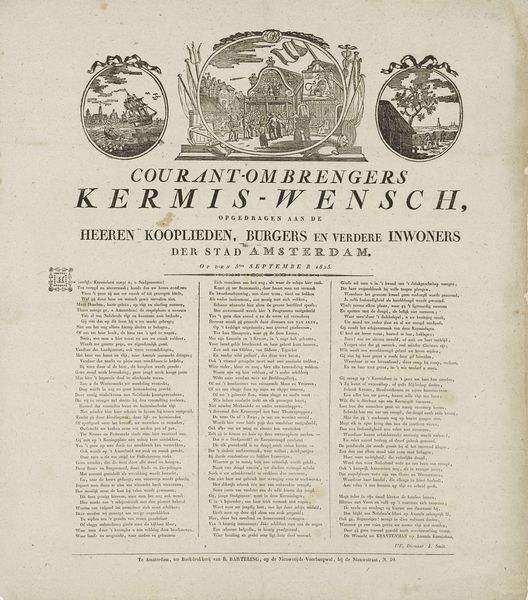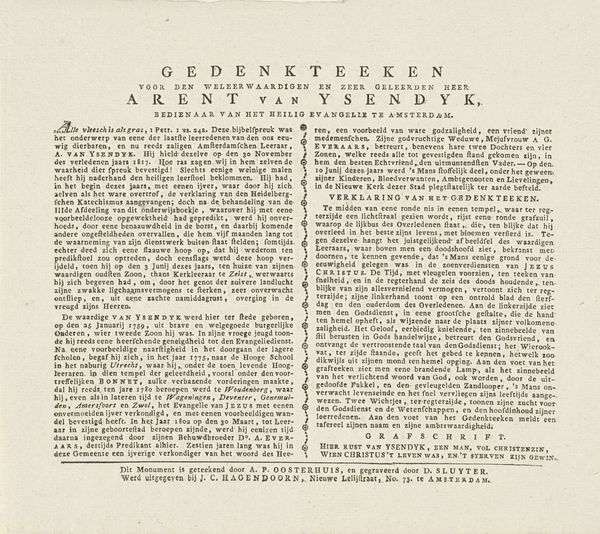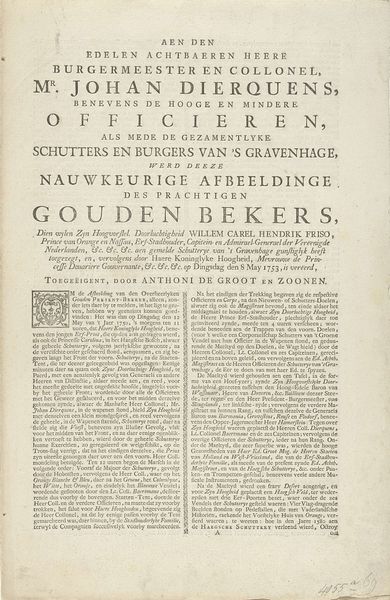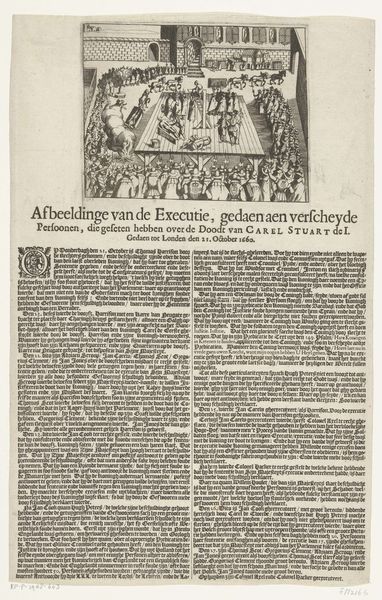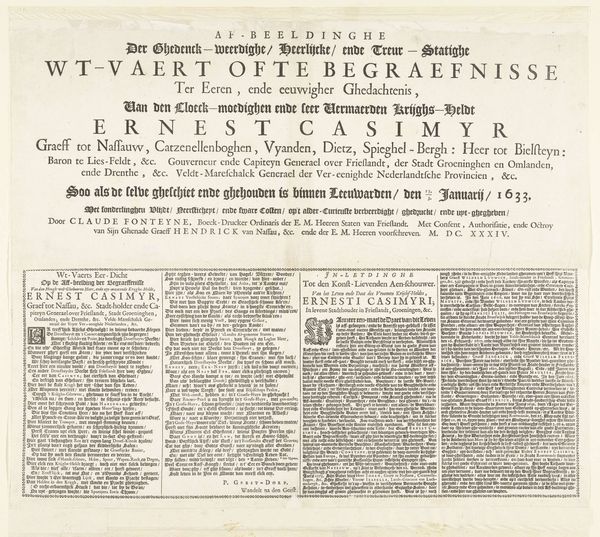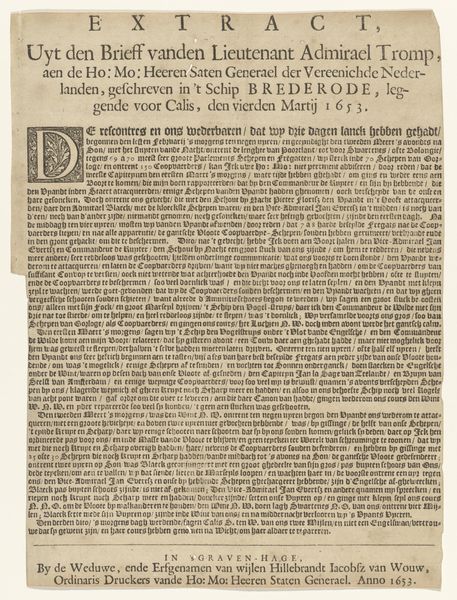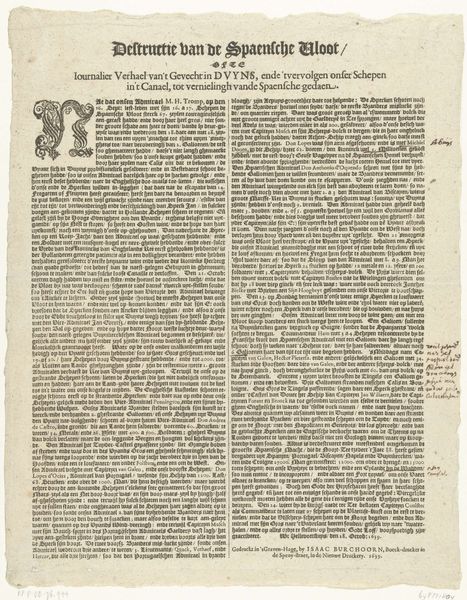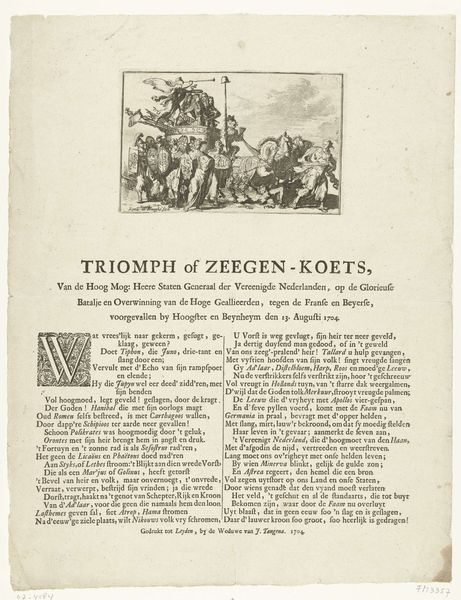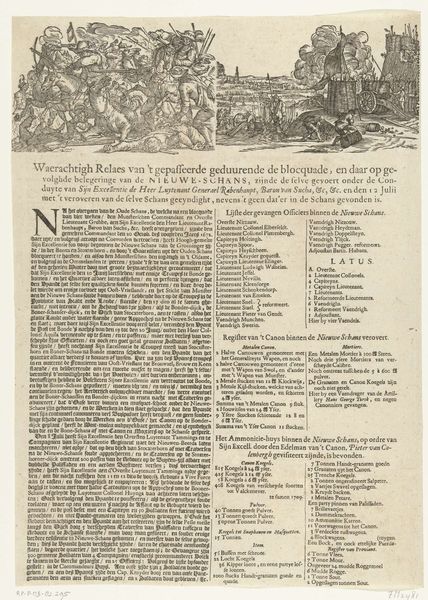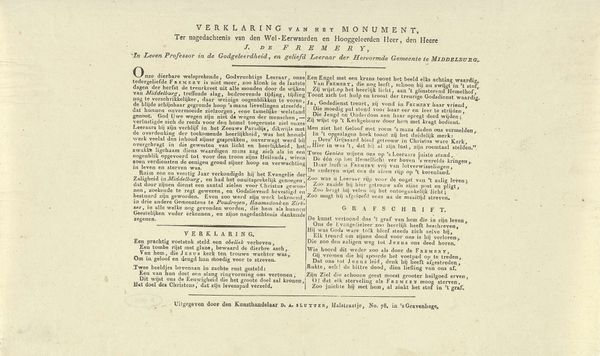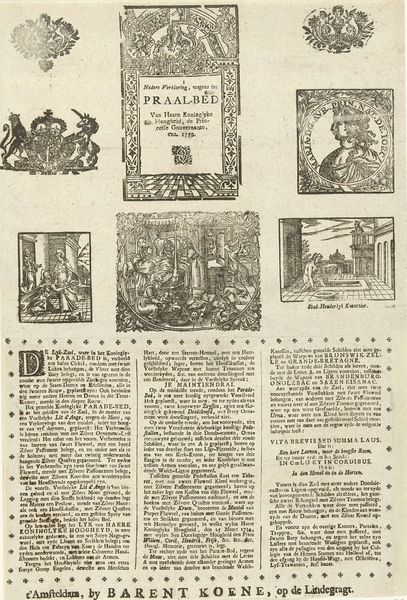
graphic-art, print, typography, engraving
#
graphic-art
#
dutch-golden-age
# print
#
typography
#
engraving
Dimensions: height 535 mm, width 453 mm
Copyright: Rijks Museum: Open Domain
Editor: This is "Kermisprent van de Amsterdamse courantombrengers voor het jaar 1826," from 1826 by an anonymous artist. It's an engraving with typography; quite text-heavy! I am curious about the scenes depicted in the top. What stories do they tell? Curator: Indeed. It's fascinating how this print functions as both art and media. Look at its explicit dedication "to all merchants, citizens and inhabitants of Amsterdam". Its cultural function went beyond pure aesthetics. These prints were essentially annual greetings cards distributed by the news carriers in Amsterdam to their patrons, who in turn would likely provide a generous gratuity during the fair season. Editor: So, it's a promotional item, tying in the cultural importance of the news carriers with city life in Amsterdam at the time. And that is why there is so much text to read through. Is there any connection to why Amsterdam is emphasized, and news carriers giving this out? Curator: The central image shows news carriers making their deliveries. Look at how it's framed in what seems to be Amsterdam with its typical canal houses and windmills. News, both then and now, is interwoven with local identity and urban experience. Prints like these reinforce social bonds within a specific community. Also note, that news carriers during that time, delivered by foot. It demonstrates just how critical social capital was in information dissemination. Editor: I see, news carriers played a vital role, connecting all people of the city. They literally spread word. Curator: Exactly! This also highlights the intricate relationship between art, commerce, and the public sphere in early 19th-century Amsterdam. What have you learned by looking closely at the text here? Editor: Seeing how deeply ingrained these prints were within the cultural and economic fabric is truly fascinating. I initially judged its visual quality but its deeper cultural purpose provides even more substance to the object. Curator: Absolutely. Understanding the social and political function allows us to perceive art not just as aesthetics but also a historical tool.
Comments
No comments
Be the first to comment and join the conversation on the ultimate creative platform.
